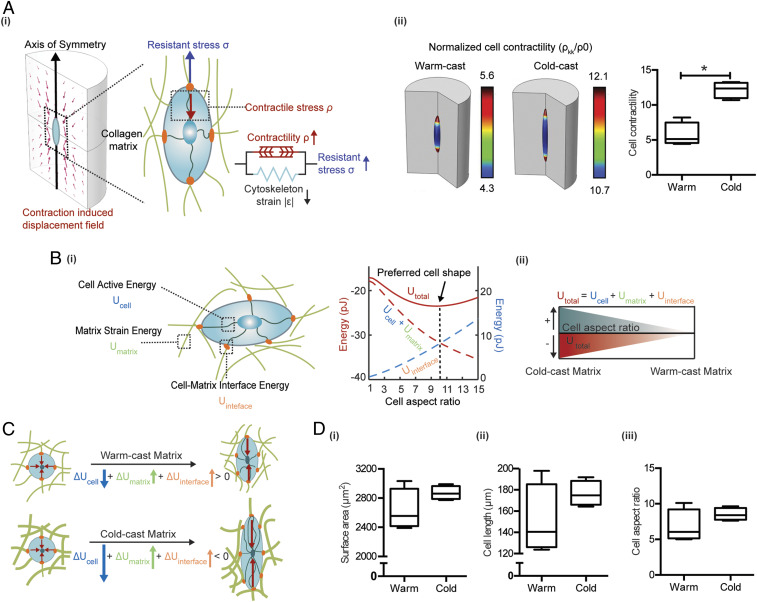Fig. 3.
Computational simulation of ASC behavior in response to altered collagen microarchitecture. (A, i) Mathematical model of cells in 3D matrix depicts the contractility and axis-symmetric shape of cells with respect to the long axis. Cells can exert contractile forces on the surrounding matrix, and the magnitude of such forces is dependent on the stress applied to the cell. (ii) Cell contractility is proportional to the phosphorylated myosin motor density in cold-cast and warm-cast collagen matrices predicted by the finite element model. (B, i) The minimum of Utotal (total free energy of the system), which consists of Ucell (cell active energy), Umatrix (strain energy of matrix), and Uinterface (cell–matrix interface energy) indicates the preferred cell aspect ratio. The energy level plotted on the left y axis (red) is for Utotal, Ucell, and Umatrix, and the one on the right y axis (blue) is the energy value of Uinterface. (ii) The schematic summarizes the relationship between U total and cell aspect ratio. (C) In the cold-cast matrix, due to the increased stiffness, elongation is associated with a larger increase in the cell volumetric stress and actomyosin assembly. The reduction in the cell active energy favors elongation in the cold-cast matrices compared to the warm-cast matrices. (D) Prediction of cell (i) surface area, (ii) cell length, and (iii) cell aspect ratio in cold- and warm-cast collagen by the finite-element model.

